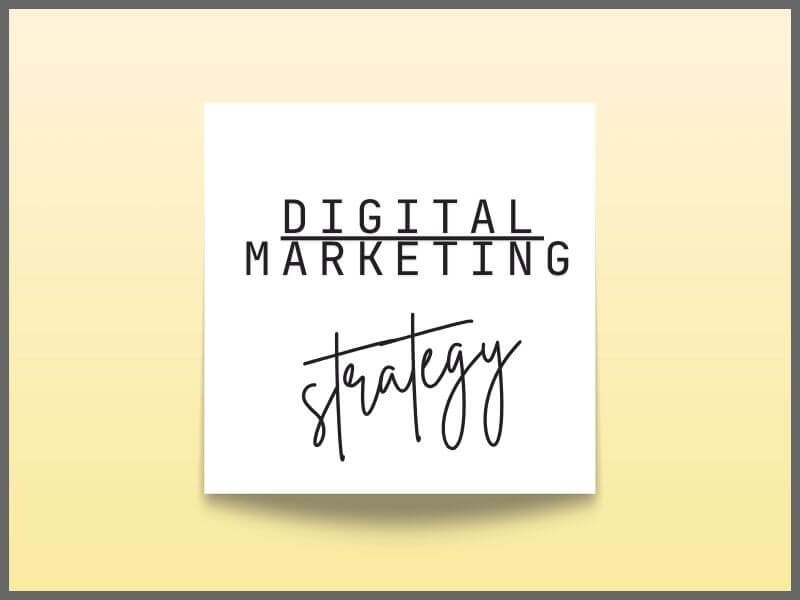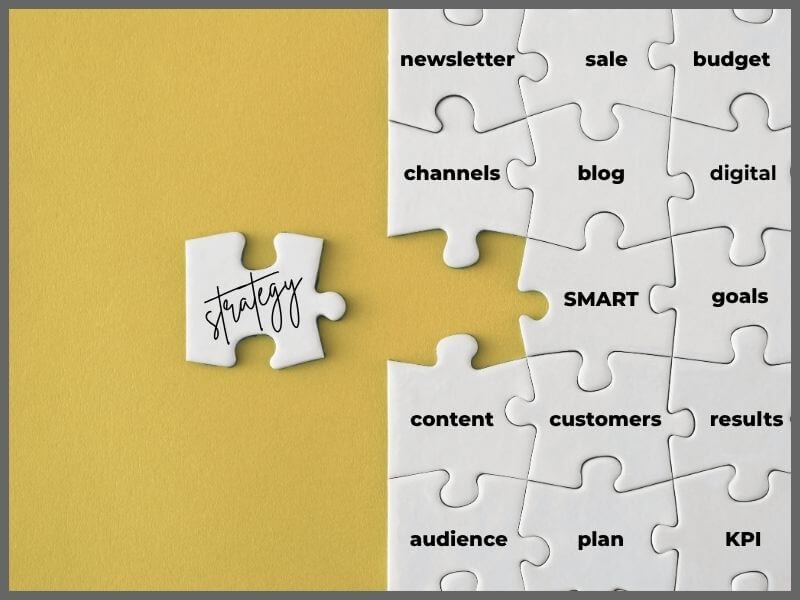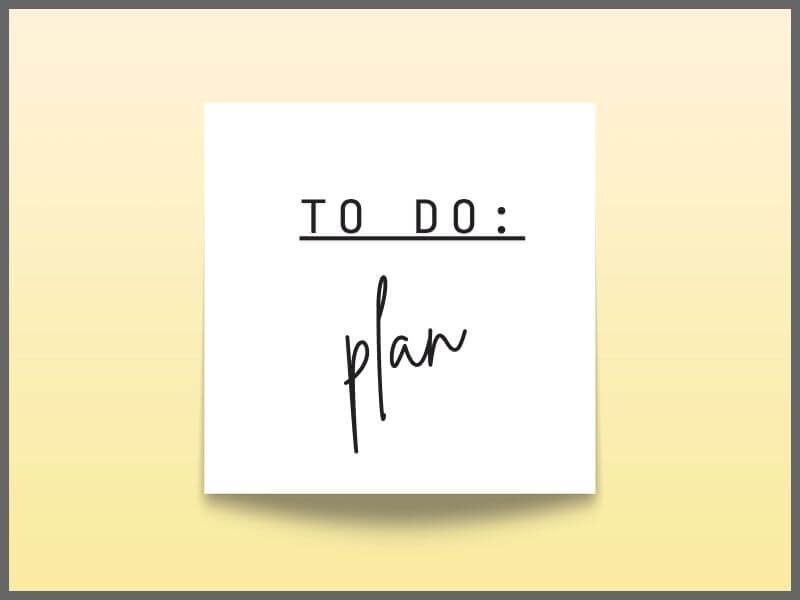
Today everyone “does marketing”. By that they mean posting on social media, having a website, maybe even occasionally paying for an ad. But if you ask what their strategy is, they often don’t know the answer. And that’s exactly where the problem lies. A digital marketing strategy isn’t just for big brands, it’s the foundation for anyone who wants real results.
What exactly is a digital marketing strategy?
A digital marketing strategy is a plan that connects your online activities with your business goals.
It is essentially a roadmap that tells you what you’re doing, why you’re doing it, and how you will measure results to know you’re on the right track.
For example, if you have a webshop with natural cosmetics, your goal might be to increase sales by 20% in the next 6 months.
The strategy will then define which channels you’ll use (Google Ads, Facebook, Instagram, newsletter), what your priorities are (traffic growth, higher conversion), what you communicate, and to whom.
A good digital marketing strategy:
It doesn’t matter if you have 3 employees or 30. A strategy helps you avoid wasting time and money by focusing on what makes sense for your business and brings results.
Let’s be clear, a digital marketing strategy is not:
These are all individual moves. Tactics.
And tactics can be useful, but without a proper strategy they lack meaningful direction.
If you don’t know who you’re talking to, what you want to achieve, and how you’ll measure success, you’re not really doing marketing – you’re just experimenting. And that can get expensive.

Creating a strategy doesn’t have to be complicated. You can do it yourself or in collaboration with a digital marketing agency, but it’s important to go through these steps:
Everything starts with the question: what exactly do you want to achieve? It’s not the same if your goal is to increase sales, bring more people to a physical store, collect inquiries, or increase the number of bookings.
What does success mean for you, and how soon do you expect it?
Set realistic goals – if you have a limited budget and are just starting out, it’s unlikely you’ll double your traffic in a month. But you can, for example, plan a 25% increase in web traffic in three months.
Examples of goals:
It is impossible to do good marketing if you don’t know who you are addressing.
Instead of trying to appeal to everyone, focus on the most important target groups.
Create so-called buyer personas – fictional profiles that represent your ideal customers. Give them a name, age, occupation, habits, and problems your product or service can solve.
Example:
“Marina, 42 years old, runs apartments on the coast, looking for simple ways to attract guests without agency commission. She spends most of her time on Facebook and uses WhatsApp to communicate with guests.”
Questions you can ask yourself:
Before you start planning, you need to know where you currently stand.
If you have a website, check the statistics: who is visiting, where they are coming from, how long they stay, where they “click”, where they leave.
If you have already invested in ads or social media, study what worked and what didn’t (so you don’t repeat the same mistakes).
Tools you can use:
You don’t need to be everywhere, only where your actual audience is.
The choice of channels depends on the type of business, your budget, and the time you have available.
Not everyone needs a TikTok profile, but almost everyone should have at least one “foundation” channel (e.g. a website or Google Business profile) and one communication channel (e.g. Facebook or newsletter).
Examples by type of business:
Without a plan, your posts and campaigns will be random and uncoordinated.
An activity calendar helps maintain consistency, prepare on time for seasonal offers, and know who is responsible for what.
What to include in the calendar:
Tools that can help:
Without measurement, you won’t know if your efforts have paid off.
Fortunately, most tools have free versions that are enough to get started.
If you run ads, be sure to track how much a click, inquiry, or purchase costs. If you invest in content, monitor how many people see and share your posts.
Essential tools:
A strategy is not something you create and leave.
A good strategy is something you work on, test, and adjust along the way. If something isn’t delivering results, adjust your approach.
Questions you should regularly ask yourself:
Tip: Once a month, sit down and review the numbers. If you work with an agency, ask for reports and have them explained to you, otherwise you’re just looking at charts you don’t understand.
SMART goals are the foundation of a good strategy because they help you be specific and measure what you’re doing.
When you know the goal, it’s easier to choose tactics, content, budget, and a way to measure.
Tip: Goals can be different for each channel, for example:

Without these elements, it will be difficult to know what you are doing, who you are doing it for, how much it benefits you, and whether you are on the right track.
Each of them has its function in the overall picture:
If you don’t know exactly what you want to achieve, it will be hard to know if you have succeeded.
If you say “I want more sales.” That can mean anything – three new orders or thirty.
That’s why goals need to be specific and measurable, and this is exactly what the SMART model helps to define (see the previous section).
Define exactly who you are addressing.
Imagine a person who could be your customer and give them a name, occupation, age, needs, and problems.
This is called a buyer persona. And when you know who your buyer personas are, you no longer communicate generically but precisely.
Example:
“Sandra is 38 years old, a mother of two, lives in Split, and is looking for natural cosmetics she can order online because she doesn’t have time to visit stores.”
When you know who Sandra is, it’s easier to know how to talk to her, where to “meet” her online, and what to offer her.
You don’t need to be everywhere, you need to be where your customers are.
If you try to maintain 5 different social media platforms and your customers are only on Instagram and Google, you are wasting time.
Example of channel selection:
Content isn’t just something you publish and that’s it. Content is the best tool for building trust, interest, and purchase decisions.
That’s why you need a clear plan:
Examples of content:
Realistically assess what you can handle yourself and what you need to delegate.
Don’t have a designer? You need someone to create visuals for you. Don’t know how or what to write? You will need help with texts.
Also, define how much budget you can allocate monthly for ads and outsourcing.
Tip:
It’s better to have fewer channels and do them properly than to spread yourself too thin and do everything superficially.
Without tracking results, you won’t even know what is working for you.
That’s why it’s important from the start to define which numbers you track (so-called KPIs, or key performance indicators) and which tools you use to track them.
Most common KPIs:
Tools that help:

When you don’t have a digital marketing strategy, everything you do is actually improvisation.
Posts without a goal, ads without logic, campaigns you don’t know how to measure.
You are spending time, money, and energy, and you still feel like “nothing is working.”
A good strategy gives you direction – you know what you are doing, why you are doing it, and why everything you do makes sense.
Does it sound like a lot of work? It is. But you don’t have to do it alone.
Zona plus helps you put things in order so that everything you do online has a beginning, an end, and a reason why. Not posting “because you have to” but doing what has a clear goal and brings results.
If you need a partner who knows how to create a concrete plan, contact us. A consultation with us could be the most valuable conversation you will have.